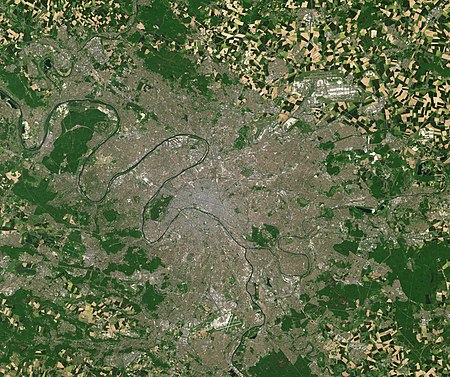Geography of Paris
All pages needing cleanupGeography of ParisHarv and Sfn no-target errorsWikipedia introduction cleanup from March 2020

The geography of Paris is characterized by the urbanization of the area it lies within, and its position in the Petite Couronne, Grande Couronne, and Île-de-France.
Excerpt from the Wikipedia article Geography of Paris (License: CC BY-SA 3.0, Authors, Images).Geography of Paris
Boulevard Saint-Germain, Paris 5th Arrondissement (Paris)
Geographical coordinates (GPS) Address Phone number Website Nearby Places Show on map
Geographical coordinates (GPS)
| Latitude | Longitude |
|---|---|
| N 48.85 ° | E 2.35 ° |
Address
Coffea
Boulevard Saint-Germain 52
75005 Paris, 5th Arrondissement (Paris)
Ile-de-France, France
Open on Google Maps









